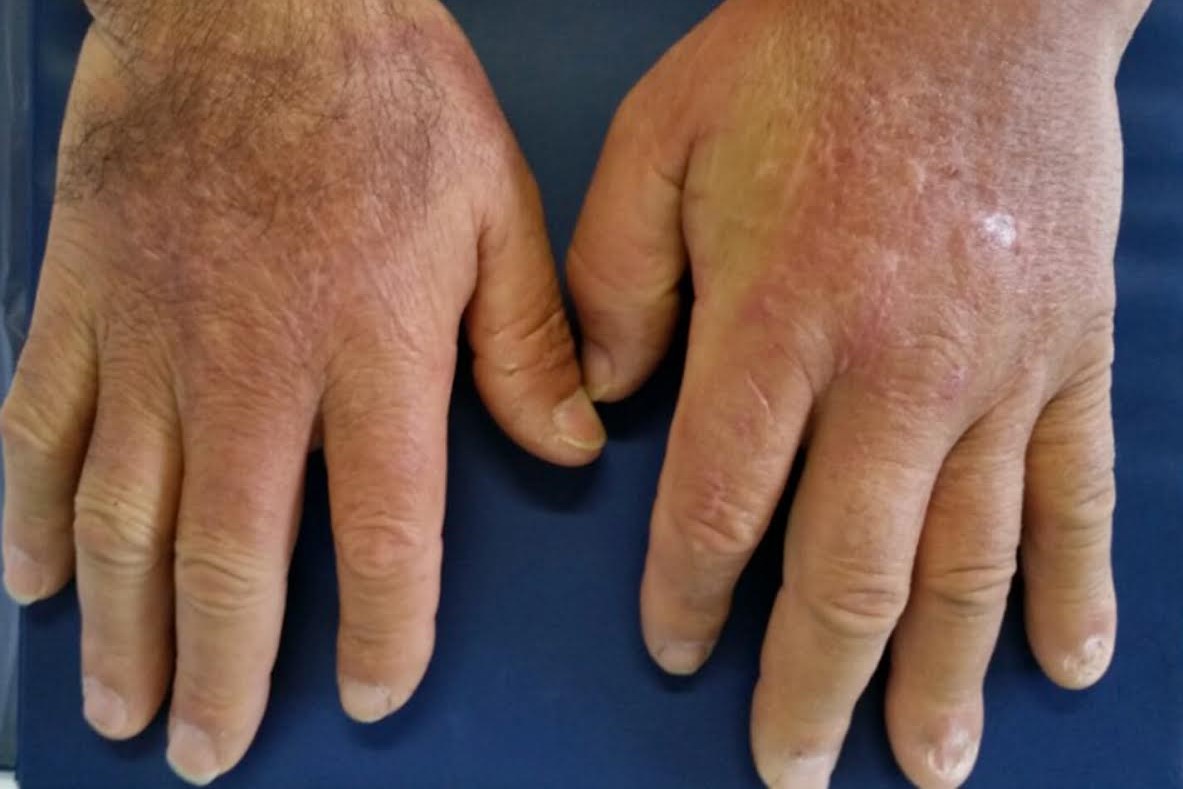
Scleroderma. Blue hands, a wake-up call: the importance of early diagnosis
Scleroderma, whose World Scleroderma Day was celebrated yesterday, is a disease that affects the skin, vessels and internal organs. But what are the causes? And the symptoms? Are there treatments available?
What is Scleroderma?
Literally, scleroderma means hard skin.
However, this definition only takes into account part of the disease’s manifestations.
More correctly, it is called systemic sclerosis because it can affect several parts of the body.
It is an autoimmune disease that occurs mainly in women.
How does the disease present itself?
The clinical history of the disease is extremely variable and not all those affected present the same symptoms.
Almost all, however, experience as their first symptom an altered sensitivity to cold that manifests itself in a change in skin colour, which turns white or blue as the ambient temperature decreases.
This symptom is the Raynaud’s phenomenon, which may precede the other manifestations of the disease by some time.
What are the symptoms of scleroderma?
Hands initially affected by Raynaud’s phenomenon may swell, become hard, i.e. fibrotic.
In varying degrees, this loss of elasticity, due to an alteration in the tissues that make up the scaffolding of the skin and internal organs (the ‘connective tissue’) involves other body sites: the face, arms, legs and trunk.
Some people are then at risk of developing respiratory problems: inflammation and fibrosis of the lungs make these organs less elastic and functional. In addition, blood circulation between the heart and lung is made difficult with the development of a particular type of hypertension: pulmonary hypertension, which prevents the blood from being properly oxygenated.
Most people with systemic sclerosis may have a stiffening of the oesophagus with a tendency to acid reflux or formation of ulcers and cuts on the fingers of the hands.
What is the cause of blue hands?
We do not yet know the cause of the disease, but some of the phenomena that lead to the development of complications related to it are well known.
In genetically predisposed persons, one or more external factors act as a trigger for an uncontrolled reaction that leads to activation of the immune system.
This reaction culminates in circulatory and organ damage and fibrosis.
Who is affected?
Systemic sclerosis predominantly affects the female sex, typically around the time of menopause (between the ages of 45 and 60), but cases at a younger age are not entirely uncommon.
Is it a rare disease?
Yes. The disease is defined as rare, i.e. no more than 5 out of 10,000 people are affected.
This allows us to estimate that 20-25,000 people in Italy are affected.
Can scleroderma be prevented?
There are no lifestyles or habits that can prevent this disease.
Certainly, the earlier it is diagnosed, the better the course and the possibility of preventing or treating any complications early on.
As mentioned above, very often the first ‘alarm bell’ is Raynaud’s phenomenon.
If one notices that the fingers of the hands turn white or blue with the cold, it would be useful to perform a capillaroscopy, a simple non-invasive examination that allows early visualisation of the circulatory changes typical of the disease.
Blood tests for autoantibodies can then be performed.
In this way, it is possible to discover a disease in the preclinical phase, i.e. even years before the typical manifestations of the disease appear, and to set up a programme of monitoring and prevention of complications.
What is the therapy today?
To date, there is no unambiguous therapy for systemic sclerosis, or a therapy that allows a definitive cure.
The main goal of treatment is to slow down its progression and treat complications.
Today, there are many drugs, and others are in development, that can treat the complications of the disease.
These drugs are all the more effective the earlier the problems of systemic sclerosis are recognised, before any damage becomes irreversible.
This is why early diagnosis and regular check-ups are important.
Read Also:
Emergency Live Even More…Live: Download The New Free App Of Your Newspaper For IOS And Android
Psoriasis, An Ageless Skin Disease
Relapsing-Remitting Multiple Sclerosis (RRMS) In Children, EU Approves Teriflunomide
ALS: New Genes Responsible For Amyotrophic Lateral Sclerosis Identified
Psoriatic Arthritis: What Is It?
Rehabilitation Therapies In The Treatment Of Systemic Sclerosis
Psoriasis: It Gets Worse In Winter, But It’s Not Just The Cold That’s To Blame
Exposure To Cold And Symptoms Of Raynaud’s Syndrome


